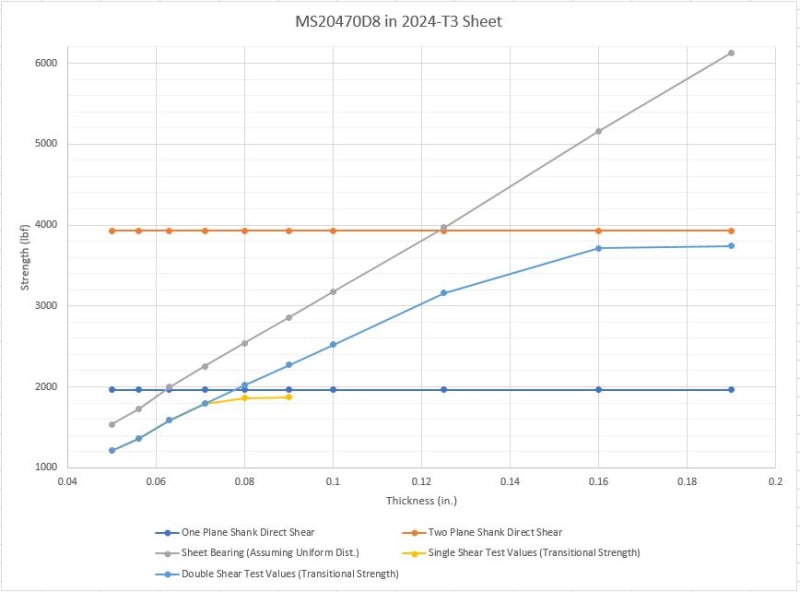OK, so first we need to understand what makes a fastener strong or weak in tension. Most commonly seen fasteners in airframes are not particularly good in tension because of the nature of their installation. Rivets and lockbolts (ie huckbolts) which have swaged collars, rely on deformation of the material to hold the system in place, which is inherently weak in tension. Hex drive bolts like Hi-Loks are somewhat better not great. Generally these are made in two varieties - shear head and tension head; however, tension head Hi-Loks are really just meant for situations where higher preload is required and they are installed with collars to match.
This is a really good site for basics:
One way that you can figure out good fasteners for tensile application is to look for existing designs which have a lot of tension in the load path and see what is installed. For example, beam end fittings and big lugs at wing roots, etc will undoubtedly have fasteners meant for high tension.
Generally speaking, in this type of scenario, we would not actually specify a Hi-Lok but instead would use a bolt with a removable collar whose torque is controlled measurement, and not through deformation or shear-off of the fastening system itself.
You might find this in industry referred to as
externally wrenching bolts. These are generally designed specifically for shear, tension, or fatigue rating, etc. They come in all kinds of varieties, 12 pt, hex, pan, socket, etc. For Boeing, these would be something like BACB30NJ, BACB30LJ.
From TM 1-1500-204-23-6:
"External wrenching bolts (12 point), as shown in figure 2-6, are high-strength bolts used primarily in tension applications. They are furnished with either drilled or undrilled heads."
Otherwise something like NAS6620, NAS563, NAS572 and a plethora of others. Installation relies on specific torque values in tables or controlled by the spec (again for example, working on Boeing aircraft, you would look in SRM 51-40-04.
Important to keep in mind:
As I mentioned above, strength values given in the spec are not really to be relied on. For tension, that would simply be the Ftu of the shank material multiplied by the shank cross sectional area. Joint strength tables in an SRM or elsewhere are usually
transitional shear strength data, so not what you want for tension either.
To calculate a tension allowable I would recommend using principles for threaded fasteners from a machine design textbook like
Norton or Shigley. (Shigley sections 8-4 through 8-12, Norton, "Machine Design", sections 15-5 through 15-12).
Keep em' Flying
//Fight Corrosion!


![[bigsmile] [bigsmile] [bigsmile]](/data/assets/smilies/bigsmile.gif)